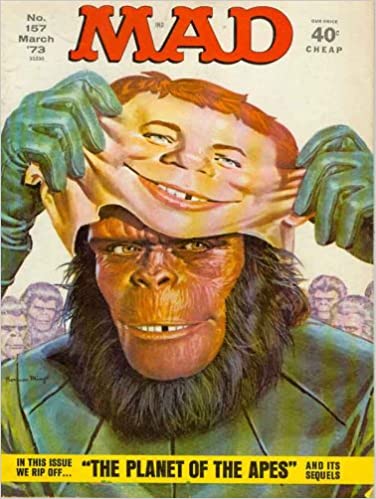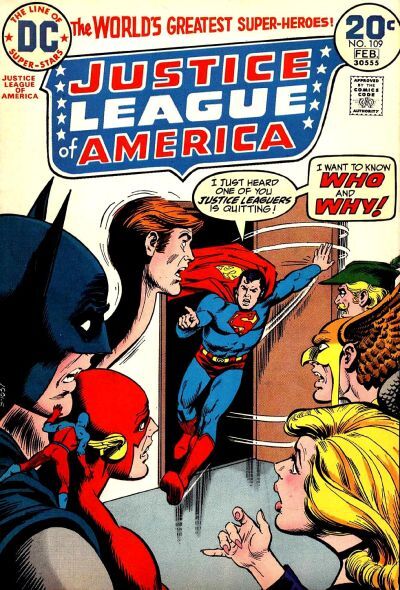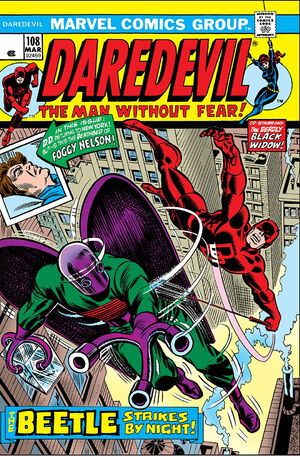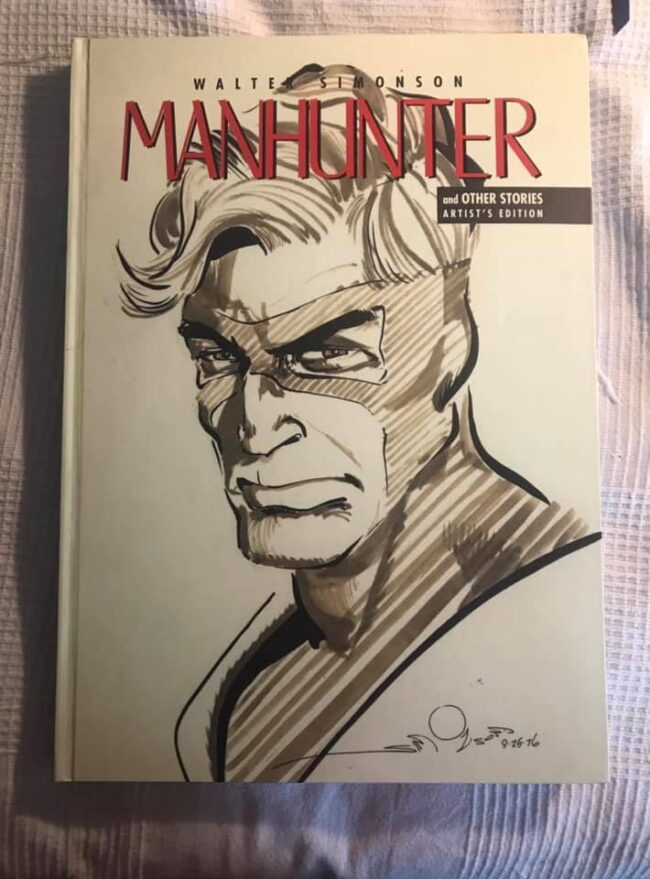Last November, I sold my entire comic book collection.
It was long overdue. I was about to turn 60 and hadn’t read any of them for years and didn’t expect to any time soon. They were just taking up space in storage. It was time.
With my son’s help, we transported all of the boxes to his apartment and then spent a weekend taking inventory and sorting a mix of old magazines, graphic novels, and comics.
One reason for the inventory was that I wanted to see what I had. Many of the comics I had bought in the early- to mid-1970s, when I started out as a collector in Indianapolis. Most of the rest were from my college years, when I rediscovered comics thanks to George Perez and Marv Wolfman’s New Teen Titans and Alan Moore’ Saga of the Swamp Thing.

After my kids were born, I eased out of comics, only to drift back in when I became an anime columnist with a Pokemon speciality for AnotherUniverse.com in the late 1990s.
Several boxes contained random comics I picked up to read from the 2000s. Most weren’t bagged or boarded. I had a complete run of The Walking Dead, which was the only book I was really reading for about 10 years.
The exercise in forced nostalgia got me thinking about how I had become a comic book fan and collector in the first place.
I was 1o-years old in 1971 and the most important thing in the world to me was Planet of the Apes.
I was crazy about it. I was annoyingly crazy about it. I bugged my parents about it, my siblings, my friends, and my teachers. I collected the trading cards, read paperback adaptations of the movies, and clipped newspaper articles that had anything to do with the film series. I remember a weird newsprint photo of a Playboy bunny playing soccer against somebody in an ape mask as part of a celebrity charity game. I was obsessed!
As someone who has spent a lifetime going from obsession to obsession, I'm fascinated by the role that Apes played in my formative psyche. It was my root-obsession. The one that started the pattern of discovery, all-encompassing interest, endless search for any scrape of information, push beyond resources purchasing, satiation, disenchantment, followed by detachment. This was repeated with comic books, science fiction, Philip K. Dick novels, Doctor Who, anime, and others.
Apes wasn't the first genre interest I had, but it was the one that pushed me over the line. I'd been a fan of Dark Shadows, Star Trek, The Six-Million Dollar Man, and Land of the Giants, but none of them hooked me beyond momentary interest. What was it about Apes that appealed to me?
At this stage in my life, I can't quite crack what was going on in my 10-year-old mind. The funny thing was that I didn't even see the original Planet of the Apes until CBS broadcast it in 1973. The last of the original five movies that I saw was the second in the series, Beneath the Planet of the Apes, which CBS aired about six months later.
These were pre-home video days, so, in order to preserve the films, I purchased a cassette player and recorded the audio off of TV, which I played over and over, alone in my room. To this day, I can repeat the dialog, word for word, as I watch the first two films, like a litany at Mass.
Before I saw those two films, the primary visual trigger for me were the trading cards, which I bought in 1968 at a drug store in Oaklandon, Indiana. I probably had about 12 cards, which I kept in a shoebox with some basketball cards and odd cards from other TV series. At some point, I pulled them out and they became the touchtone for my obsession.
In 1971, I begged my mom to take me to Escape from the Planet of the Apes, the third in the series and the first I saw in a theater. My sister was dragged along too. I loved the movie, of course. But I remember the story being surprisingly dark and violent. My mom liked the movie, but she didn't like feeling more sympathetic for the apes than the humans — damn, violent humans.
I saw the last two movies in the series Conquest and Battle in the theater. By the time Battle had rolled around, the rest of my family had given up on my obsession. I had to ride my bike to the theater to see it. I saw it twice, once on the first day and the second time a week later when it closed. By that time, the rest of America was bored with talking apes.
There was a TV show and a limited-anima

tion cartoon series, but even I was bored by this time. I'm not sure exactly when my obsession died, but I was already deep into a new obsession, which, not surprisingly, had a Planet of the Apes connection.
What’s important to know is that in 1973 my sister brought home a bad report card. In reaction, my parents, in a well-meaning but misguided sense of fairness, decided to rope me into my sister’s punishment. Even though my grades were good, I was told: “They could be better.” This was a classic discipline approach of theirs. Don’t punish the offender. Punish everyone.
The choice of the punishment was simple: No TV after dinner on school nights for the rest of the school year. Typically, we ate at 5 or 6 p.m., so it meant my sister and I were deprived of all nighttime television viewing.
Every night, my sister just locked herself in her room and did whatever she did to cope. TV was not that big a deal for her.
For me, it was different. I was a hard-core TV junkie in the early 1970s. It was my main form of entertainment and distraction. I found it tough to go cold turkey.
This was a classic characteristic of my parents’ approach to punishment. Those in the periphery often suffered more than the actual offender. Understandably, I did not react well, which only reinforced my parents’ resolve that they were doing the right thing.
Since I wasn’t a bad student, it didn’t take me that long to finish my homework. Then, every night, I struggled for hours trying to find something to occupy my mind.
We were not much of a book-reading family when I was growing up, so there weren’t many books in the house. Fortunately, I found the key to my next obsession at a local department store — Mad Magazine #157.
I was still in the throes of my Apes mania, so the magazine’s cover was made for me — a gorilla removing an Alfred E. Neuman mask to reveal a gap-toothed grin. I devoured the Mort Drucker-drawn “The Milking of the Planet that Went Ape” and the other features. In short order, I was a Mad maniac.
And yet, my fascination was short-lived. You can only reread a humor magazine so many times before it loses its appeal. Also, it was hard for me to find past issues. It turns out that Mad was only a gateway drug to my real addiction, comics.
Poking around in late 1973 on the magazine shelves at the Village Pantry near my house, I saw the cover of Justice League of American #109. Superman is shown bursting through a door, pointing accusingly at the rest of the JLA, and shouting, “I just heard that one of the Justice Leaguers is quitting! I want to know WHO and WHY!”

I won’t spoil the almost 50-year-old answer to Superman’s shouted concerns, but it points to one of the things that hooked me on superhero comics when I was 12. Buying that comic, which I read over and over again, I realized that superheroes had a past and they appeared to change.
My only prior exposure to the DC universe was the Adam West Batman TV show, where things returned to normal at the end of the second episode. But this comic pointed to a larger continuity in comics of which I wasn’t aware.
One thing you should know is that I'm DC and not Marvel. I felt I should get that out there for those who still see a distinction. In the comics-reading world of the early 1970s, that was a tough stance to take.
History tells us that Marvel’s new “real emotion” heroes of the 1960s had replaced DC’s straight-arrow, good guys always win, gods walking among us action stories. But for me, the forced realness in the Marvel stories always seemed to be a put-on and frequently got in the way of the storytelling. More often than not, when two Marvel heroes met for the first time, they’d argue over something stupid and then spend five pages pummeling each other. I found that boring.
I did try.

The next comic book I bought from the Village Pantry was Daredevil #108. When I got home, I was disappointed to discover that the guy in the red suit on the cover was not the Red Tornado from the JLA. Also, it was a middle issue of a longer story, so I felt kind of cheated.
Yes, I know, I just said the appeal of DC was the continuity and now I’m rejecting continuity in the Marvel Universe, which, I later found out, the company was well-known for. What do you want? I was 12.
I eventually got over this prejudice against the “House of Ideas,” picking up some X-Men comics that Neal Adams had drawn and loving Howard the Duck. But, for most of that four-year period in the mid-1970s when I was a comics fan, I was a DC Comics fan.
Every week, I’d pedal my bike to the Village Pantry to get the latest issue of Kamandi, Batman, or JLA. I was a huge fan of DC’s mystery and horror books edited by EC Comics great Joe Orlando. I especially liked his run on The Phantom Stranger and Adventure Comics, the last one featuring The Spectre by Michael Fleisher and Jim Aparo.
I loved Joe Kubert’s Tarzan stories and all the associated comics like John Carter in Weird Worlds, Korak, or Carson of Venus, which was beautifully rendered by Michael Kaluta — oh my god, Kaluta’s art on The Shadow was amazing and definitive for that pulp character. I started picking up all the pulp reprints from that era, including Doc Savage and ERB’s fantasy/science fiction novels. I credit these books for getting me into reading science fiction in general and leading to my career as a writer. Even DC’s short-lived Sword and Sorcery comic book introduced me to the Fahfrd and the Gray Mouser books by Fritz Leiber.
But the comic book that stood at the apex of this phenomenal period at DC and had the greatest impact on me was Detective Comics, edited by Archie Goodwin.

For most of its run, the book was published in the wonderful DC 100 Page Super Spectacular format. Not only did every issue contain a great selection of reprints from the company’s archives, it featured a new Batman story illustrated by a different artist — including a biplane battle drawn by Alex Toth (“Death Flies the Haunted Sky, Detective Comics #442) — and, more importantly, a new installment of "Manhunter" by Goodwin and Walt Simonson.
Goodwin and Simonson’s Manhunter series was a master course in visual storytelling. Every installment was fast-paced and exciting. There were flashbacks and well-defined characters. Simonson’s artwork was acrobatic — that’s the only word I can think of to describe how thrilling it felt turning each page.
Then it ended.
I had already learned that about comics. Every time you find a character or artist you love, the book will be canceled or a new creative team shows up without any explanation.
The difference with Manhunter was that Goodwin and Simonson brought their story to its logical conclusion.
I was sad that it had ended but appreciated its ending.

Not too long ago, I found a notebook that I had created to keep track of what comics I had bought and the store where I’d purchased them.
I can’t remember why, but I tore out the first part of the notebook at some point, so the listings begin in the summer of 1975 with DC Special #18, which appears to be the 375th comic I’d bought. The notebook goes on for 22 pages and ends with the 807th entry, Phantom Stranger #7, a back issue I’d purchased at a convention in 1978
The thing I find most interesting about the notebook is seeing where a book was purchased and the significance it had to a moment in my life.
On the first page, you’ll find entries for the Goudon Drugstore and “flea market,” which were among my usual haunts. But then some books came through the mail, either as a subscription (Action #384) or a special order (Amazing World of DC Comics #6). There are also several entries from Rapid City, South Dakota and Yellowstone, from a two-week vacation my family took. The Rapid City comics were the first I ever bought at an actual comic book store.
Flipping through notebook pages, I see other entries from vacation purchases and references to The Comic Carnival, the first comic shop in Indianapolis. It’s still going strong, albeit at a different location.

But as you get further into the notebook, you begin to see me losing interest in collecting. By 1978, I’m a junior in high school and at that time reading comics was a not a “cool” thing to do. Although I would rediscover my comics obsession a few years later in college, I decided for the first time back then to box up my comics, stick them in a closet, and forget about them.
Before leaving this early period in my collecting, I want to share a story that took place at the second comic book convention that I ever attended, NapCon ‘75 in Indianapolis. That’s where I had my Stan Lee moment.

I was a ninth grader in junior high and was attending with Chris Blaylock, who would become my best friend in high school. He wasn't a comic book fan, but his little brother was. His brother didn't come with us, but he had asked Chris to pick up some Marvel books for him.
When we got to the convention, we shopped for comics, looked around, and discovered that the guest of honor was Stan Lee. I may have been a DC guy, but I recognized that Lee was a superstar in the backwater world of comic books. The previous Christmas I had even received one of his Marvel histories as a gift, Son of Origins of Marvel Comics. I remember being pretty impressed that such a luminary was at a podunk convention in a suburban Indy hotel. So, when it was announced that Lee was going to speak, Chris and I went to listen.
I remember nothing about the speech, but I do remember it took place near the hotel pool, where the audience sat in patio chairs in the blazing sun. Lee talked for a bit, fielded questions and that was it.
Back in the dealer room, Chris and I made one more pass until we discovered that Lee was at a table in the hallway signing autographs. I helped Chris pick out an old Iron Man comic for Lee to sign for his brother. I looked in my bag, which was filled with DCs, so I figured for form's sake I should buy a Marvel comic.
At the table near the end of the autograph line, I flipped through a stack of Marvels. By the mid-70s, Lee wasn't really involved in the day-to-day of writing or editing at Marvel, even though every title in the line contained the intro: "Stan Lee Presents…". So picking out a book cheaply that Lee actually might have had a hand in presented a momentary challenge.

Then I came across a book I recognized: Daredevil #47. The story in the book was called "Brother, Take My Hand!" and concerned Daredevil's encounter with a blind Vietnam vet. I had just read the story in Son of Origins of Marvel Comics and thought it was quite moving. That particular copy was probably in VG to fine condition and only a couple of bucks.
As the line got shorter, we watched the other fans handing Lee their books, which he'd sign and then he'd smile and nod. The guy in front of us had a stack of about 50 books. For a moment, it seemed like we'd be there for hours waiting for Lee to finish signing that stack, but he told the guy that he was going to have to take all the books out of their bags before he could sign them.
Chris handed Lee his Iron Man. Lee signed it and handed it back without comment. I handed him the Daredevil. He looked at it and paused.
"You know," he said, cocking his head and glancing up at me, "I really liked this story. It's one of my favorites."
"Yeah," I said. "You put it in Son of Origins."
Lee thought for a moment. "You're right." He took his marker, signed the book and handed it back to me smiling.
And that was it. My moment with Stan Lee. I felt pretty cool.
While I can enjoy my notebook as tangible evidence of my life as a young collector, the actual books themselves had become less important to me over the years. It was nice to remember a story occasionally or a series, but if I wanted to read something from long ago, I’d buy the graphic novel.
Aside from lugging the boxes around, it was surprisingly easy to sell my comic book collection last November. The emotional attachment was minimal.
Shoff Promotions runs a monthly comic book and sports card show at a firehouse in Annandale, Virginia that my son and I would go to occasionally. I’d become friendly with Jason Hamlin, a dealer from Richmond. He agreed to come to my storage locker after one of the shows in November to check out what I had to sell.
We dragged boxes out and Jason flipped through them. At one point, he pulled out some issues of American Flagg! by Howard Chaykin.
“Every collection I buy from the 1980s always has a complete run of American Flagg!,” he said.
We haggled a bit and he offered $3,500.

I’m 60 now. When I die, do I want my family to be burdened by all of this? It’s not like I had high-grade Golden Age books or a complete set of EC horror comics. I collected the books I liked. Despite what we used to believe about a huge future windfall, most of the books my generation hoarded away can be found in the dollar bin these days or in collected editions.
“OK,” I said.
We shook hands and loaded the boxes into Jason’s cargo van.
When we were sorting the comics at my son’s apartment, I gave him some books I knew he’d like: Batman by Neal Adams, the Len Wein/Bernie Wrightson Swamp Things, and a set of Strange Tales featuring Dr. Strange by Steve Ditko — see I eventually came to appreciate Marvel. The only thing I kept for myself was the set of Detective Comics with the Manhunter by Goodwin and Simonson.
The rest of my comics are all memories to me now.






